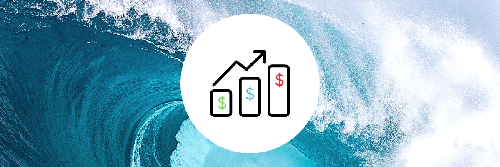Loans are defined as sums of money that must be repaid with interest, including government-issued federal student loans, personal loans from banks and other financial organizations, and loans obtained by parents to assist their children with their educational expenses.
You can borrow money for your education through student loans. Student loan debt is currently affecting 44.7 million Americans. Students have to repay their loans with interest once they stop attending school, whether they are federal or private loans.
When a student is granted a loan, the money is given to them or through the financial aid office. If a student resides on campus, the school will handle loan funds received for tuition, housing & board. If money remains after these costs are covered, the college will provide the student with a check for the balance.
Read on to find out the different student loan options.
Various Federal Options
One of the better federal loan choices is direct subsidized lending. This need-based loan has a fixed interest rate and an annual value of $3,500 to $5,500.
Another federal loan option is the direct unsubsidized loan, which is more prominent in size than subsidized loans. Dependent students can borrow between $5,500 and $7,500 each year, whereas independent students are allowed to borrow between $9,500 and $12,500.
Parents of undergraduate students who are dependent are eligible for PLUS loans. They are a choice for people who desire to assist their kids with college expenses without submitting them to onerous loan installments. Parents with poor credit records could find it challenging to get financing, and the interest rate on this loan choice is also greater.
Federal Student Loan Application
It is mandatory that the student fills out and submits the Free Application for Federal Student Aid. The financial aid office at the respective college will then send an award letter to the student. This letter will provide information on their direct subsidized and unsubsidized loan choices.
Applicants must contact the school to accept or reject any loans offered. The papers, including the Master Promissory Note, must be signed as the last step in the student loan application procedure. This agreement guarantees that students pay back their debts and any fees or interest that may have accumulated.
Private Student Loan Application
You might decide to borrow money from private lenders if federal loan aid is insufficient to cover the cost of your degree. Many sources, including Sallie Mae, CollegeAvenue, Discover, and CommonBond, are all available. Both fixed and variable interest choices may be available for these loans. Congress sets the interest rates on government loans, but private lenders are free to set their rates and charge extra to borrowers with bad credit.
What If Student Loans Are Not Paid?
After graduating, students are given a grace period of about six months before they can start repaying the loan. However, the lending company would mark you as delinquent if you don't start repaying your loan by the deadline. Delinquent debtors may experience default in addition to late fines. Being in default lowers your credit score and opens you up to wage garnishment and tax return interception by the government or a collection agency until the obligation is paid.

